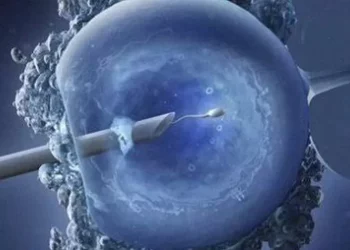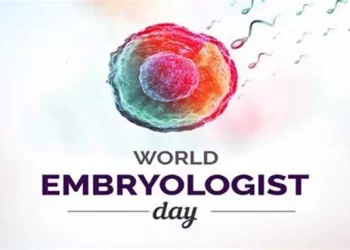Infertility is a condition that affects millions of couples worldwide. While much of the focus tends to be on female infertility, male infertility is equally significant. In fact, male factors contribute to about 40-50% of infertility cases. Understanding the most common causes of male infertility is crucial for diagnosis, treatment, and managing expectations. This article delves into the prevalent causes of male infertility, highlighting key factors, diagnostic methods, and treatment options.
Understanding Male Infertility
1. Definition of Male Infertility
Male infertility is defined as the inability of a man to achieve pregnancy with a fertile female partner after one year of regular, unprotected intercourse. It involves problems related to sperm production, quality, or delivery.
2. Importance of Male Fertility
Male fertility is crucial for conception. Healthy sperm production and function are necessary for fertilizing an egg. Infertility in men can arise from various issues affecting sperm quantity, quality, or the delivery mechanism.
3. Key Statistics
Prevalence: Male infertility affects approximately 7-10% of men globally.
Diagnosis: About 40-50% of infertility cases involve male factors.
Common Causes of Male Infertility
1. Low Sperm Count (Oligospermia)
Definition:
Low sperm count, or oligospermia, refers to having fewer sperm in the ejaculate than normal. A normal sperm count is typically above 15 million sperm per milliliter of semen. Counts below this threshold can impact fertility.
Causes:
Genetic Factors: Conditions like Klinefelter syndrome involve an extra X chromosome and can result in low sperm production.
Hormonal Imbalances: Low levels of hormones such as testosterone can reduce sperm production.
Environmental Factors: Exposure to toxins, chemicals, or high temperatures can impair sperm production.
Diagnosis:
A semen analysis is used to evaluate sperm count. A count below the normal range indicates oligospermia.
Treatment:
Hormonal Therapy: Medications can address hormonal imbalances.
Lifestyle Changes: Reducing exposure to toxins and managing stress can improve sperm count.
Surgical Options: Procedures like varicocelectomy may be considered in some cases.
2. Poor Sperm Motility (Asthenozoospermia)
Definition:
Poor sperm motility means that sperm have reduced ability to move efficiently. Good motility is crucial for sperm to travel through the female reproductive tract and reach the egg.
Causes:
Genetic Abnormalities: Genetic factors can impact sperm motility.
Infections: Certain infections can affect sperm function and motility.
Lifestyle Factors: Smoking, excessive alcohol consumption, and drug use can impair motility.
Diagnosis:
A semen analysis assesses sperm motility. Normal motility is above 40% of sperm showing good movement.
Treatment:
Medications: Treatment for underlying infections or hormonal imbalances can improve motility.
Lifestyle Modifications: Quitting smoking and reducing alcohol intake can enhance motility.
Assisted Reproductive Technologies (ART): Techniques such as ICSI (Intracytoplasmic Sperm Injection) may be used if motility is severely impaired.
3. Abnormal Sperm Morphology (Teratozoospermia)
Definition:
Abnormal sperm morphology refers to sperm having irregular shapes and sizes. Normal sperm morphology is crucial for the sperm to penetrate and fertilize the egg.
Causes:
Genetic Factors: Genetic conditions can lead to abnormal sperm morphology.
Environmental Toxins: Exposure to toxins and chemicals can affect sperm shape and size.
Medical Conditions: Certain medical conditions and medications can impact sperm morphology.
Diagnosis:
A semen analysis evaluates sperm morphology. Typically, at least 4% of sperm should have a normal shape for optimal fertility.
Treatment:
Lifestyle Changes: Reducing exposure to toxins and improving diet can enhance sperm morphology.
Medical Interventions: Addressing underlying medical conditions or making changes to medications can help.
ART: Techniques like IVF (In Vitro Fertilization) may be employed when morphology is significantly abnormal.
4. Erectile Dysfunction
Definition:
Erectile dysfunction (ED) is the inability to achieve or maintain an erection sufficient for sexual intercourse. While ED does not directly affect sperm production, it can hinder the ability to conceive.
Causes:
Psychological Factors: Stress, anxiety, and depression can contribute to ED.
Medical Conditions: Diabetes, cardiovascular disease, and hormonal imbalances can cause ED.
Lifestyle Factors: Smoking, excessive alcohol consumption, and obesity are risk factors.
Diagnosis:
Diagnosis involves a medical history review, physical examination, and potentially diagnostic tests like blood tests or penile ultrasound.
Treatment:
Medications: Drugs like Viagra or Cialis can help improve erectile function.
Therapy: Psychological counseling can address underlying stress or anxiety.
Lifestyle Changes: Improving diet, exercise, and reducing alcohol intake can alleviate ED.
5. Varicocele
Definition:
A varicocele is an enlargement of the veins within the scrotum, similar to varicose veins in the legs. It can lead to decreased sperm production and quality.
Causes:
Impaired Blood Flow: Poor blood flow due to the enlarged veins can increase testicular temperature and affect sperm production.
Diagnosis:
Diagnosis is typically made through a physical examination and ultrasound imaging to assess the extent of the varicocele.
Treatment:
Surgery: Varicocelectomy is a surgical procedure to remove or repair the enlarged veins.
Lifestyle Changes: Managing factors that contribute to varicocele, such as avoiding prolonged sitting or heavy lifting, may help.
6. Hormonal Imbalances
Definition:
Hormonal imbalances involve abnormal levels of hormones such as testosterone, luteinizing hormone (LH), and follicle-stimulating hormone (FSH). These hormones are essential for sperm production and overall reproductive health.
Causes:
Hypogonadism: Low testosterone levels can impair sperm production.
Pituitary Disorders: Disorders affecting the pituitary gland can impact hormone levels and sperm production.
Diagnosis:
Hormonal tests measure levels of key hormones involved in reproductive health.
Treatment:
Hormone Replacement Therapy: Treatments such as testosterone replacement therapy can address hormonal deficiencies.
Medications: Specific medications can correct hormonal imbalances and improve fertility.
7. Genetic Factors
Definition:
Genetic factors involve inherited conditions or chromosomal abnormalities that can affect sperm production or function.
Causes:
Klinefelter Syndrome: This genetic condition involves an extra X chromosome and can result in low sperm production and fertility issues.
Y Chromosome Microdeletions: Deletions in specific regions of the Y chromosome can affect sperm production.
Diagnosis:
Genetic testing can identify specific genetic abnormalities or conditions affecting fertility.
Treatment:
Genetic Counseling: Provides guidance on managing genetic conditions and their impact on fertility.
ART: Techniques like sperm retrieval combined with IVF can help overcome genetic infertility issues.
see also: What Can Men Do to Increase Fertility
Diagnosis of Male Infertility
1. Semen Analysis
Purpose:
A semen analysis evaluates sperm count, motility, and morphology. It is the primary test used to diagnose male infertility.
Procedure:
A sample of semen is collected and analyzed in a laboratory to assess sperm parameters.
2. Hormonal Testing
Purpose:
Hormonal tests measure levels of reproductive hormones such as testosterone, LH, and FSH.
Procedure:
Blood samples are taken to assess hormone levels and identify any imbalances affecting fertility.
3. Genetic Testing
Purpose:
Genetic testing identifies chromosomal abnormalities or genetic conditions that may impact fertility.
Procedure:
Blood samples are analyzed to detect specific genetic markers associated with infertility.
4. Imaging Tests
Purpose:
Imaging tests such as ultrasound can assess the structure of the reproductive organs and identify any abnormalities.
Procedure:
Imaging techniques are used to visualize the testicles, vas deferens, and other relevant structures.
Treatment Options for Male Infertility
1. Lifestyle Modifications
Diet and Nutrition:
A balanced diet rich in vitamins and minerals supports sperm health. Foods high in antioxidants, such as fruits and vegetables, can improve sperm quality.
Exercise:
Regular moderate exercise helps maintain a healthy weight and overall reproductive health. Avoid excessive exercise, which can negatively impact fertility.
Avoiding Toxins:
Reducing exposure to environmental toxins, such as pesticides and chemicals, can improve sperm production and quality.
2. Medical Treatments
Hormonal Therapy:
Medications can address hormonal imbalances affecting sperm production. Hormone replacement therapy may be used to correct deficiencies.
Medications for Infections:
Antibiotics or other medications can treat infections affecting reproductive health.
3. Assisted Reproductive Technologies (ART)
Intrauterine Insemination (IUI):
IUI involves placing sperm directly into the uterus around the time of ovulation to increase the chances of fertilization.
In Vitro Fertilization (IVF):
IVF involves fertilizing eggs outside the body and transferring embryos into the uterus. This technique is used for severe cases of male infertility.
Intracytoplasmic Sperm Injection (ICSI):
ICSI involves injecting a single sperm directly into an egg, used when sperm quality or motility is significantly impaired.
4. Surgical Interventions
Varicocelectomy:
A surgical procedure to remove or repair enlarged veins in the scrotum, improving sperm production and quality.
Sperm Retrieval Techniques:
Procedures such as testicular sperm extraction (TESE) or percutaneous epididymal sperm aspiration (PESA) can be used to retrieve sperm directly from the testicles or epididymis for use in ART.
Conclusion
Male infertility is a multifaceted issue with several potential causes, ranging from low sperm count and poor motility to hormonal imbalances and genetic factors. Understanding these causes is essential for accurate diagnosis and effective treatment. With advancements in medical technology and treatment options, many men facing infertility can find solutions and support to achieve successful conception.
If you suspect infertility or are struggling with conceiving, seeking professional medical advice is crucial. A thorough evaluation by a healthcare provider can identify the underlying causes of infertility and guide appropriate treatment strategies. While the journey to parenthood may be challenging, medical advancements and personalized care offer hope and opportunities for many couples facing fertility issues.
Related topics:


























